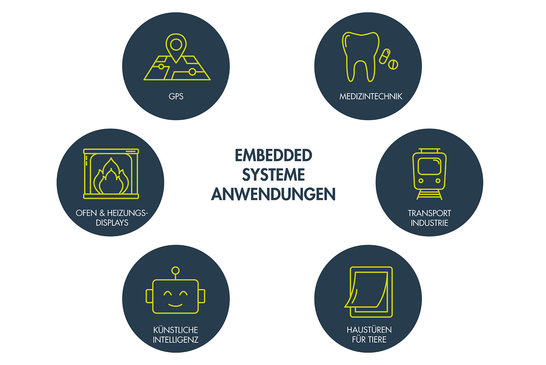Special
Embedded system or programmable logic controller (PLC)?
Both embedded systems and programmable logic controllers (PLCs) are essential components in automation technology. But which system is best suited for my (new) product?

Both embedded systems and programmable logic controllers (PLCs) are essential components in automation technology. Both types of system offer specific advantages, depending on the requirements and complexity of the application. Here is a structured comparison of the two technologies that can help in the decision-making process.
Embedded system vs. PLC
Flexibility
- Embedded systems are extremely adaptable and can be programmed for a wide range of applications. They can be integrated into existing systems and can also be adapted or expanded at a later date. Both an application processor and a microcontroller can be an embedded system.
- PLCs have been specially developed for the control and regulation of industrial processes. They offer robust and reliable solutions for automation tasks and are particularly widespread in industrial environments.
Real-time capability
- Embedded systems (under microcontrollers) offer the ability to operate in real time, making them ideal for applications that require fast response times, such as in robotics or medical technology.
- PLCs are also designed for fast and precise control tasks. They often use special real-time operating systems that ensure deterministic processing and low latency, which is essential in process control and safety-critical functions.
Programming languages
- Embedded systems can be programmed in various high-level languages and with "linear code", such as C/C++, Python or Java, depending on the application requirements. Assembly languages are also often used for hardware-related functions.
- PLC uses special graphical and text-based programming languages such as IEC 61131-3, Structured Text (ST), Ladder Logic (LD) or Function Block Diagram (FBD), which are specially tailored to industrial automation requirements. These are based on cycle times.
Hardware
- Embedded systems use a variety of hardware components, from simple single-board computers to customized circuits, which allows for flexible adaptation to different budgets and technical requirements.
- PLC consists of robust hardware units that are optimized for continuous operation in industrial environments and can withstand extreme conditions.
Integration
- Embedded systems can be seamlessly integrated into larger systems and often perform a wide range of functions from sensor technology and data processing to cloud connectivity.
- PLCs are often the backbone of industrial automation systems and are primarily used to control machines and systems.
Cost comparison
- PLC: An economic advantage can often be achieved when using programmable logic controllers in small quantities (less than 100 units). PLC systems have low one-off costs as they are standardized, ready-to-use units designed specifically for industrial applications.
This makes them particularly attractive for smaller production quantities or applications where customization of the hardware is not required.
-
Embedded systems: For larger production runs, embedded systems show their financial advantages. Although the initial development costs for a customized embedded system can be higher, these costs can be spread over the larger number of units.
The individual hardware costs are generally much lower, which significantly reduces the overall project costs, especially for large quantities. This is facilitated by the fact that the components for embedded systems are often cheaper due to their mass market availability and enable flexible adaptation to specific requirements.
Conclusion
The decision between PLCs and embedded systems in automation technology should not only be made on the basis of technical specifications, but also taking into account the planned quantities and the associated cost structure.
While PLCs are financially attractive for smaller quantities and standardized requirements, embedded systems offer considerable cost advantages for more extensive productions and the need for specific adaptations, but can no longer be adapted afterwards.
Both embedded systems and PLCs offer unique advantages and are crucial in automation technology. The choice between them should be made based on specific requirements such as cost, product lifetime, environmental conditions and maintenance needs.

Ginzinger relies on embedded systems
Ginzinger electronic systems has many years of experience in the development of customer-specific embedded systems. We make sure that all components are produced by us and correctly matched to each other. Ginzinger therefore not only takes care of the programming of the software, but also the production of the entire product. Perfectly coordinated hardware and software components form the platform for your device.
